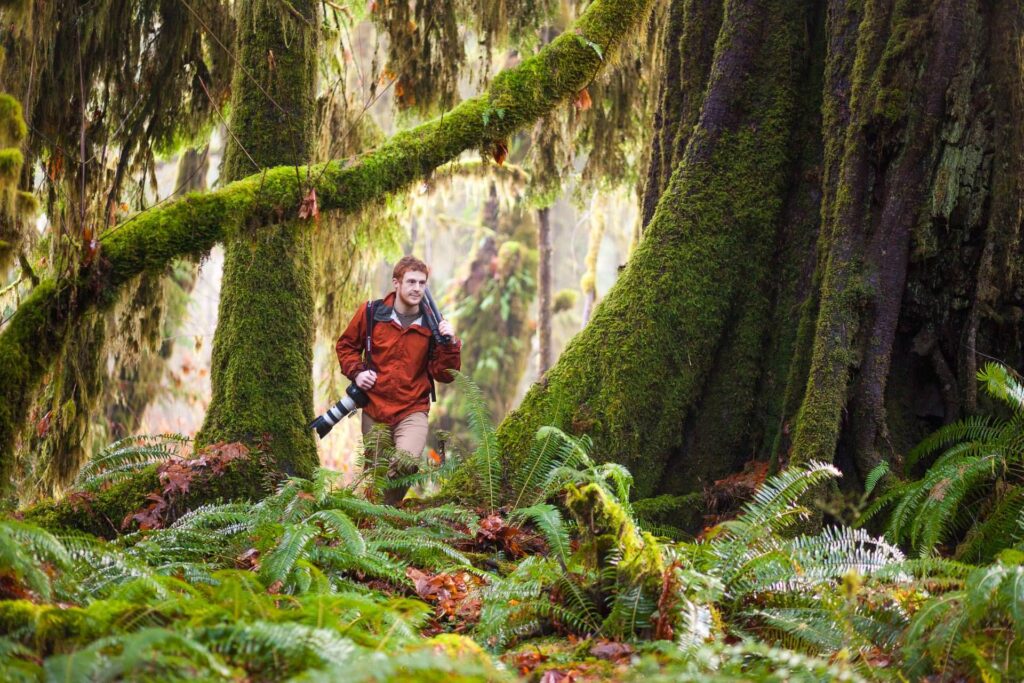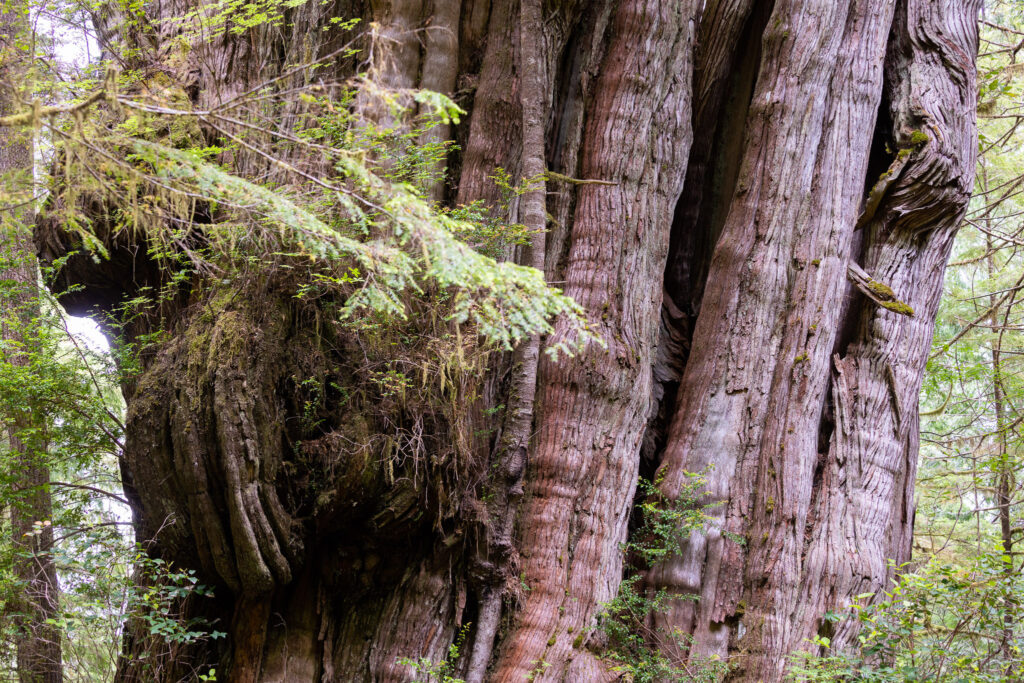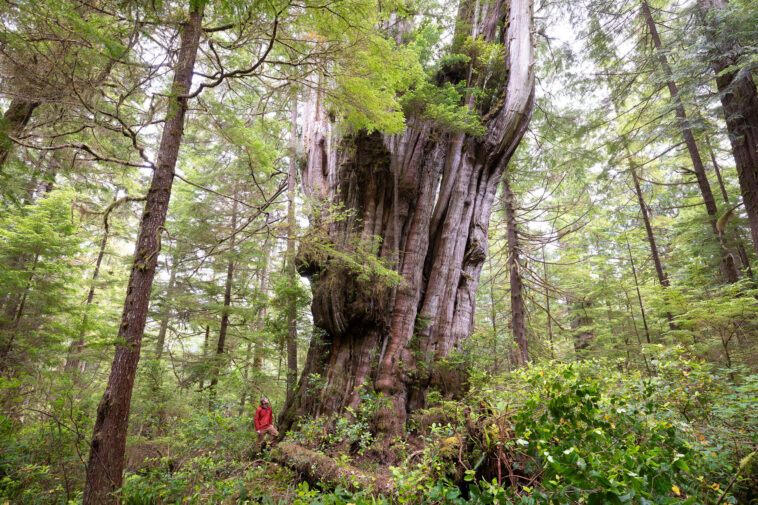A BC forest enthusiast is celebrating a find of a lifetime during an era when old-growth trees are increasingly under threat.
“No tree has blown me away more than this one.”
TJ Watt, Photographer
Award-winning photographer TJ Watt and the Ahousaht First Nation are, for the first time, revealing incredible images of a massive red cedar near Tofino.
“No tree has blown me away more than this one,” Watt told CBC News. “It literally is a wall of wood.”

Watt has been on a mission for decades to seek out and document the ancient trees of coastal BC while advocating for their preservation from logging and other industrial activities.
In 2022, the National Geographic & Royal Canadian Geographical Society explorer and Ancient Forest Alliance photographer was on a trip to Clayoquot Sound and stumbled upon the cedar.
The tree is located near Tofino on Ahousaht First Nations territory, and at 46 metres tall and 5 metres wide, is estimated to be over a thousand years old. Locals refer to it as “The Wall” or, in the Nuu-chah-nulth language, “ʔiiḥaq ḥumiis,” meaning “big red cedar.”
“Unlike most other trees, its trunk gets wider going upwards, culminating in a sprawling fortress-like crown of wooden spires akin to a massive wall of an ancient castle.”
Ancient Forest Alliance

Stunning video of the tree was shared on the Ancient Forest Alliance’s Instagram, where the organization wrote, “Unlike most other trees, its trunk gets wider going upwards, culminating in a sprawling fortress-like crown of wooden spires akin to a massive wall of an ancient castle.”
The red cedar may have the most wood volume on the fifty feet of its trunk of any tree of its kind, which is why the Ancient Forest Alliance is calling it “perhaps the most impressive tree in Canada.” The Alliance and the Ahousaht Nation are not revealing its location to preserve the tree and its ecosystem.
This specific tree is safe from logging as part of the Ahousaht Nation’s Land Use Vision, in which its members are protecting 80% of their land and old-growth forests. Watt and the Ahousaht First Nation hope that by sharing these images, they can raise awareness of the importance of old-growth conservation.
“We want to continue our ancestral responsibility to steward and monitor the lands and waters that support our people.”
Ahousaht Nation Website
The Ahousaht have a ‘voluntary stewardship fee’ for their territories, similar to a BC Parks’ day-use pass, to raise funds for conservation. “We want to continue our ancestral responsibility to steward and monitor the lands and waters that support our people,” their website explains.
See more incredible photos of this rare and ancient tree on the Ancient Forest Alliance’s Instagram and Facebook.







